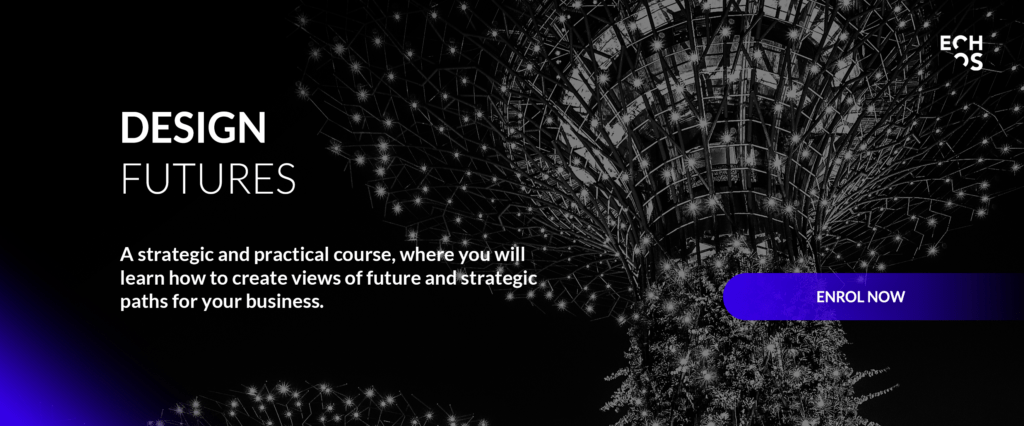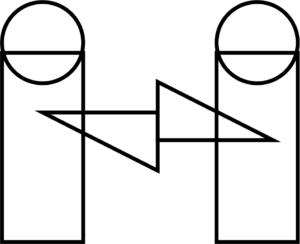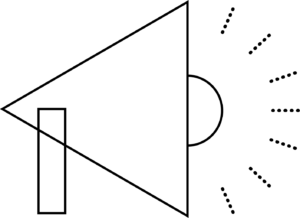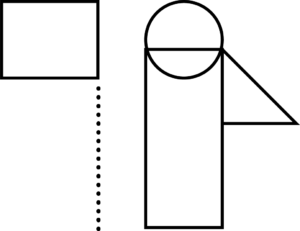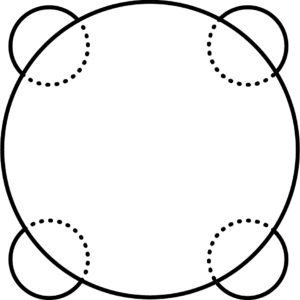As design finds its place in every industry in the 21st century, we check in with Echo’s Design Leadership team to answer the question on everyone’s mind. How do you set up a design team in a non-traditional design space, say finance, for instance? And what are the top five essential qualities of a design leader?
Go to your LinkedIn homepage. Navigate to the search icon sitting on top of the page. Type the word “design,” and watch what happens. As of this writing, the search yielded over 45 million results. People with the job title. People working in the field. People transforming their industries through the power of design in every form and shape. From finance to healthcare and to government institutions, designers have met their moment. And the skills of today’s designers are no longer housed with Adobe. Chances are you won’t see some of these designers wearing neon-colour eyeglasses or sitting in a drafting chair for the next big project.
They now sit with the management team to draft business plans and navigate data with non-designers. These are the designers calling the shots in a liminal world. The boundaries have been broken. There are no longer any thresholds to keep designers behind some cubicles to design.
I spoke with the Design Leadership team at Echos about the changing roles of designers in the 21st century. What the heck is Design Leadership, and what are the top five things they bring to the table in an industry fraught with terminologies and trends.
Put your design career on a more global map. Click to join the Design Leadership Program next cohort
Meet Márcio Leite
Márcio Leite headed the Strategic Design at Globosat network and Globo TV in Brazil. At Globosat, he implemented and led an innovation laboratory, developing systemic innovation projects and operations with internal areas and with commercial partners (advertisers) from different segments and industries. From being a Graphic Designer at a London-based digital design agency to leading the innovation lab for a media conglomerate, Márcio is what Echos means when they talk about the changing roles of designers.
I have just pressed my record button on Zoom. Marcio is wearing a button-up Puma jumper, 70’s style. My questions are in my hands, and his glasses beam some low reflections of his fluorescent table lamp across the screen. Let’s do this.
What exactly has changed over the years in the design space? We’re talking about the new century. We’re talking about how we’re living in a new time. People say it’s post-covid here. What has changed?
Things have evolved in the profession – the way we produce, create, and develop things. Ten or fifteen years ago, it was more centred on talent. We spent a tremendous amount of time, work, and effort to create something new and original, not functional or efficient. So that’s, I think, the main change.
Now, companies really want to make the most of their resources. So the role of a designer has changed. I really believe that we are closer to the decision-makers in the business more than ever.
Yeah, but some disagree that creatives have always been closer to the business. No?
At least from my experience, I would say that we were more like an accessory. Closer to the market than closer to the business.
A CEO wouldn’t ask a designer to help create a year plan for the company. And what I have experienced so far in the last years of my career is that we are sitting on the board to create solutions based on information from research.
And, of course, we still have designers working in all the production lines, but we are also now building a business strategy with the C Suite. Most companies these days have a CDO, chief designer officer, which is quite a high position in a company.
Definitely, the title is not just only to create nice visuals or app; it is about making decisions about the routes that that business will follow in the future.
So, how would we differentiate Echos’ design leadership program from other design leadership programs that are advertising out there. How is it different?
It’s the whole system approach.
With the design leadership program, you have some tools from the design perspective to apply to businesses. You will bring more visions of the consumers. You will optimize all the data and research to create discourses and narratives for the business that will significantly impact their bottom lines.
There was a time when designers used to be rock stars who worked in silos to produce shiny objects we all prize. Today’s businesses are asking for more. They want a more holistic view of their offerings. Design leaders know exactly how to meet the moment by connecting the dots, organizing assets, managing multidisciplinary talents, working from inside the organization to manage significant transformations – for instance, digital.
Today’s designers are mediators, facilitators, curators and good listeners. There’s no longer a space for those egos that produced the design rockstars of the previous eras.
What qualifies one as a design leader? Is there a thing called Design Leadership?
Yes. I believe there is design leadership. In a company, you have positions for design directors that will lead teams to design digital products etc., and I think that’s some specialty. However, to lead teams to produce coherently is a kind of leadership. These types of design leaders are closer to the business – like redefining the visions of the future. And I think that’s the main difference. Defining the visions of the future for the business.
I think designers really can build new visions of the future. They understand the context, the people we are designing for, and the needs. Then they match these with the business vision. These kinds of leaders sit down with the C suite to create or redefine the future vision. And that is what qualifies someone to be in design leadership. It’s much different from just being a creative director.
Learn more about Design Futures here
In other words, you can be crafts-led, or you can be a visionary?
Yeah, exactly. I think the approach would be much the same. I mean, the way we will apply our skills to build a design system. Let’s say a bank application, for instance, is the same thinking you’d apply to a business to come out with new business solutions, new products, etc.
It’s interesting. And you just mentioned something. Well, as we were talking, I don’t think you deliberately wanted to say. You talked about building systems. Do you want to elaborate on what it means to build systems?
Yeah, building systems is actually the crucial need of today’s businesses.
In the past, we had these silo ways of working – a very competitive environment to be. Because, of course, every silo would like to stand out in their outcomes. Time and resources were wasted. Nowadays, companies are more assertive on their desired results as change is constantly happening. So designers have to be more effective, do things more efficiently and focus on a business challenge. This requires that everyone must be on the same page while at the same time having this distance from the business to have to see the whole vision of the system.
It’s a totally new way of working and organizing the assets to produce new solutions, products, and services. So it’s all about creating new systems that rely on what already exists. Creating new resources or demanding more investment.
Take, for instance, companies making the transition to the digital transformation process. Now, they need to change their culture. This calls for design leadership.
Being a holistic or system designer, a designer can see the whole picture and help midwife this new culture. Is that what you’re saying?
Indeed, there was an era when we had designers acting like rock stars. Today we are no longer outside of the business. We are like supporters, mediators, facilitators and listeners who understand the context – you connect the right assets to produce new outcomes.
These days, we check our ego at the door because we’re not looking for rock stars. We’re looking for mediators. We’re looking for co-actors. We’re looking for co-designers, much much more than just a designer that we used to have.
And it’s not just about proffering solutions. I think we are creating conversations. And, and for me, that’s more important than having to come up with solutions to everything around us.
Do you have to go to a business or a leadership school to learn this, or is this part of what you learn in the Design Leadership program at Echos?
Well, I really, I believe that these days you should understand the motivation of your team members. If you know the motivation and if that motivation is connected with the company’s purpose or the department you’re leading, that is the first match.
And the second thing I really believe is that when you are leading a team, you are no longer that top-to-bottom leader anymore. I mean, that doesn’t make much sense. If you’re talking about collaboration and cooperation. So to reach a consensus between the teams, help them understand the goals, and help them come out with new visions. That will be a way to keep them really engaged.
When building solutions, instead of provoking competition, allow each team member to define their own goals. That’s really important.
What do you mean?
Well, when you give them a significant objective inside that business vision, let the team set up their challenges. Because if you provide the objective and point the direction, how will people feel helpful in that task? Do you know what I mean? You open to the team to co-create their own aims, they will come up with new Solutions.
You let them know it’s not just about the outcome, but the process is happening. Yeah. Yes. Absolutely.
But the C suite is always talking about outcomes. How do you balance all of this?
Set up milestones – some measurements of accomplishment during a project. So when you set up with your group these milestones during the project and celebrate each of these milestones, that will help.
Okay. To recap, kindly share five essential things that you would recommend for any person building a design team now, especially in a not traditionally creative space. Like, like fintech, or healthcare, for instance.
1- Build trust
The starting point is trust. I have this friend who said if I tell my son, I’ll hold your hand, and we’re jumping off the cliff. I’m never gonna let go of that hand, no matter how far we go. I’m going to hold you tight. So, you can trust that I’m holding your hand until the end. Let your team know that you will not let them go. You will not drop them under the bus, no matter what happens.
2- Celebrate every Milestone
Every rock you put in that building takes work and takes time. And if people see the results, they will be motivated to keep going because there is evidence that the process is working. This is working, they’d say. So they want to go on working. Yeah, it’s like if you’re reaching for significant investment at the end of the year from your corporation, you should show them in January that it’s already working. Don’t wait for the big moment. Don’t wait until the end of the process. Let people know that the process is working because people want to see that they invest their talents in something productive.
3- Make everyone feel equally important
When you are a part of a team, when you are building together, I think a good leader will be working together with the team, I mean, someone who shares work together with the team all the time. Avoid any kind of elite bias during the process. Like if you put them to work together and in the end, you say that’s right or wrong. It’s not a collaborative process. Let your team have the autonomy to make decisions and proffer solutions. Putting everyone on the same level, no preferential treatment, no rockstars. This might sound like something we hear everywhere, but it is real; I mean, be hands-on, sit together, work with everyone. I think that’s the way to, okay, make it more horizontal.
4- Don’t provoke competition. Inspire
As a leader, you have to inspire your team to keep them motivated. But the way you do that can be different when we are talking about design leadership. But we must create a vision of the future for the team, making them see where we’re going. They are building new paradigms, new systems. So we need to inspire them to think in a new way. Help them to envision what is coming.
5- Build rituals with your team
It is important to have rituals and use artifacts to keep them working together. This will help them to have an overview of the challenges of the business or the company. So when you keep them at the same pace using rituals and design tools, you help them envision what’s coming next. It’s pretty helpful to keep them out of anxiety because sometimes teams wonder where they’re going. So a design leader is not just a leader but also a priest.
Rituals keep us grounded, you know, in the reality of our togetherness, it makes us wake up and believe that we are still together because I know that, when I wake up, my neighbours are going to say good morning, that’s a ritual. And if I wake up tomorrow, and they don’t say that, I begin to feel something is wrong. So as a design leader, you’re supposed to create internal rituals that can help people get grounded and understand that we are here. Here. Together.
And how about the external people, those who are not designers, who are your C suite, your CFOs, and all of that. How do you get along with them? Because as a person in leadership, you have to carry along, not just the creatives. You’re moving along with the accounts person. You are working with people who don’t understand a thing about design. How do you get along with those?
As far as I’ve been working with multidisciplinary teams, like at the media company, I was working with designers and copywriters, editors, and business directors from the business unit. Apply these five core principles to them too.
Trust is the first step. They’re investing money in you. You have to show the quick wins and show what you’ve accomplished in terms of Return on investment, ROI.
So, for instance, if you have a year business plan. Let’s say a budget – that budget can increase or decrease during the year because they can take the money from your area, especially in the Innovation area. Show them quickly that what you are doing is working. Having some evidence of ROI will be the language they will understand.
And by doing that, if you can carry them along in the process where you are, where you are going, etc., that will have helped them track the evolution of the process.
Also, help with minor challenges. You know you have to show the results of your work, but if you help them with other things, something concise. And you show them the application of the process, the application of the tools, the application of that approach, you build trust. So, when they see the result in the small stuff, they will be interested in giving you even more significant challenges.
Small results inspire more extensive Investments.
When do you call the shots, though? Where do you say this is not going to work. They are taking away all your budget, and they’re cutting off everything. When do you stop?
I think there is one word that I’ve missed in this conversation. Transparency.
That’s really important.
When you try to build trust with your stakeholders, it’s essential to be transparent in the process. That means that when something is going wrong, no one will be surprised because they’re following the process with you.
And as you build step-by-step and bricks by brick, it will be observed by the team together. Everyone will realize when things are going in the wrong direction, so you have time to make adjustments.
In terms of design leadership, the load of responsibility is shared with everyone as part of the process.
Download the FREE Echo’s Design leadership workbook here
Thank you.
Join me for more nuanced conversations about design, design leadership, design futures and phygital design on this channel. Let’s talk about how designers are meeting this moment in history. Let’s share the stories.
—
Follow us on social
instagram: @echosaustralia
facebook: @ECHOSaus
linkedin: @echos-innovation-lab
youtube: ECHOS Innovation Lab
spotify: Desired, the podcast
How Can We Help?
For training and Innovation Journeys in your company:
check out our in-house course offering.
____
For upcoming courses in your region: visit our website.
____
If you have a special project and would like to use Echos’ consultancy services: send us an email: contact@echos.cc
Want to speak to a real person? Call us on 1300 502 006




